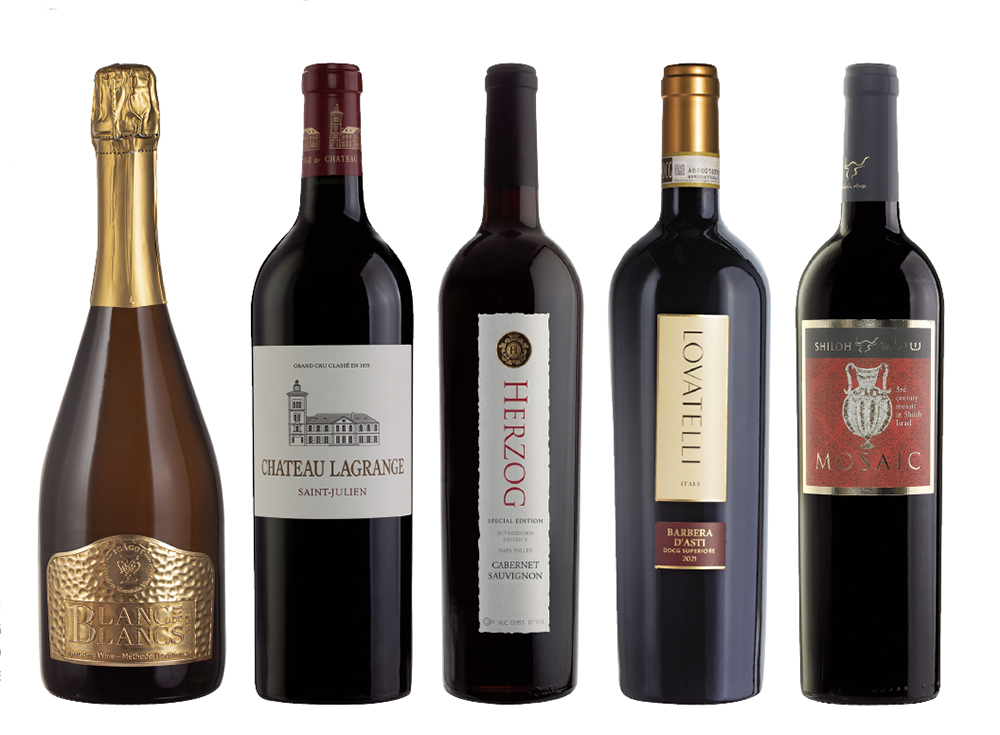
As 5783 comes to a close, so does the harvest season for many wineries, marking yet another remarkable year of growth for kosher wine in terms of diversity and availability. In the upcoming year, 5784, there is a treasure trove of high-quality wines from some of the world’s most prestigious regions to look forward to.
Rosh Hashanah holds a unique place in the Jewish calendar. It’s a time for reflection, encompassing both the lessons of the past year and the potential of the one ahead. While davening, our focus shifts to introspection and teshuva. Despite being solemn, the Yomim Noraim are also joyous holidays, deserving wines that echo this spirit—special bottles that bring smiles to our tables.
My ideal way to begin the year is with a bottle of sparkling wine. Bubbly wines radiate positivity and perfectly complement festive meals. Refreshing, exciting and versatile with food, sparkling wine pairs beautifully with a wide array of dishes. While the selection of kosher French Champagne continues to grow, I’d like to highlight one from Israel crafted just like Champagne.
For over two decades, Yaakov and Naama Berg and their team at Psâgot winery have been producing rich and thought-provoking wines, drawing inspiration from both old and new worlds. Psâgot just released a Blanc de Blancs: a Champagne-method sparkling wine made entirely with Chardonnay grapes that is nothing short of exquisiteâcrisp, dry, with lively effervescence, and adorned with yeasty and mineral notes that elevate any meal to a first-class experience.
This year, let’s embrace patience as a virtue. Being patient with wine can be extraordinarily rewarding. Consider wines that, when stored correctly, continue to evolve and improve for years after their release, gaining smoothness and complexity, layering on delicious flavors and aromas. L’havdil, it is a bit the same with the soul. The more we nurture it, the closer it grows to God. Except for wine, there is no teshuva possible; if wine was damaged due to improper storage, it cannot be “fixed.”
The key to enjoying aged wine, besides having a wine cooler or a cellar, is to purchase a few bottles (or better yet, a few cases!) of each wine you intend to cellar. Start by tasting a bottle upon release, and then revisit it every two to three years to monitor its evolution. Special occasions like Yom Tov or a family simcha provide excellent opportunities to assess its progress and appreciate its growth.
Two wines that consistently exhibit aging potential are the Shiloh Mosaic from Israel and the Herzog Special Edition Cabernet Sauvignon Rutherford from California’s Napa Valley. These wines can continue to improve for a decade or more after their harvest year. While the Shiloh tends to develop a spicier and juicier character, the Herzog Rutherford offers bold, concentrated berry notes, with some earthy undertones reminiscent of the finest Bordeaux wines.
Speaking of Bordeaux, keep an eye out for the Château Lagrange 2021. This amazing classed growth wine, hailing from the Saint-Julien appellation, presents youthful notes of red berries with a velvety mouthfeel, complemented by a distinctive austerity. Over the years, this austerity will transform over time into mouth-filling, smooth and captivating secondary and tertiary notes of forest floor and chocolate.
Italy holds a special place in the hearts of wine lovers, offering some of the most intriguing and flavorful wines. The Piedmont region in northern Italy, in particular, produces a wide array of wines. The new Lovatelli Barbera d’Asti comes highly recommended. It boasts notes of ripe strawberries, red cherries and raspberries with herbaceous nuances and high acidity, delivering a unique experience with each sip.
Celebrating Yom Tov by uncorking a special bottle like those mentioned above will enhance any meal. It is entirely appropriate and even encouraged to indulge in such wines on Yom Tov. Sipping these wines reminds us of the value of patience and how time can transform a wine, just as it transforms us through our choices and decisions. Shana Tova!








